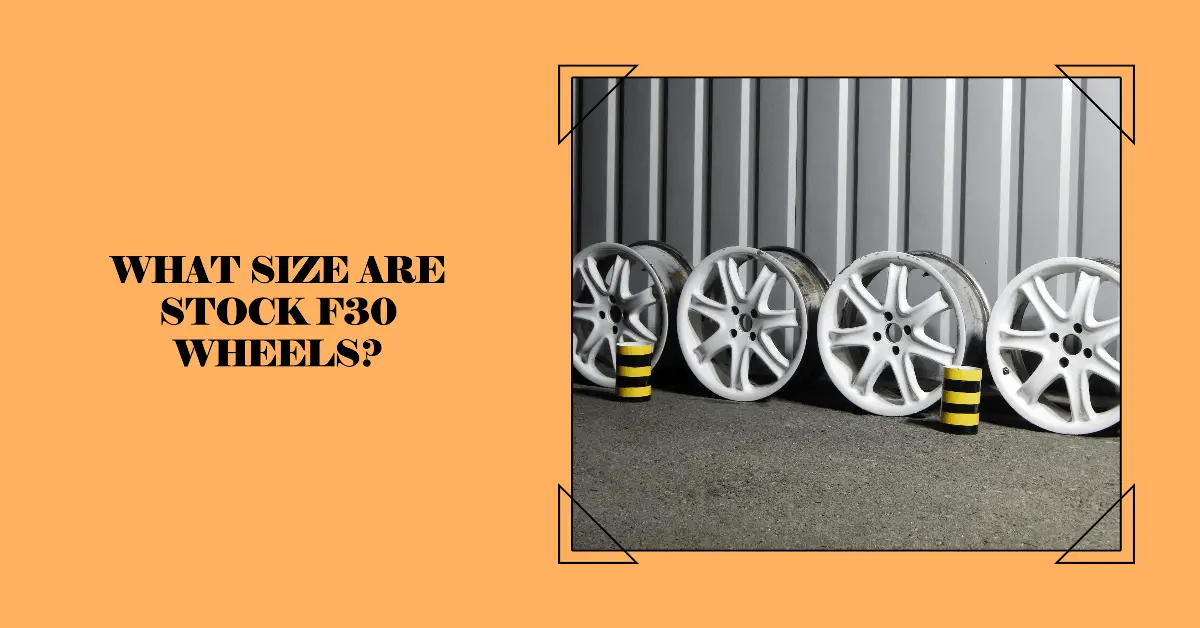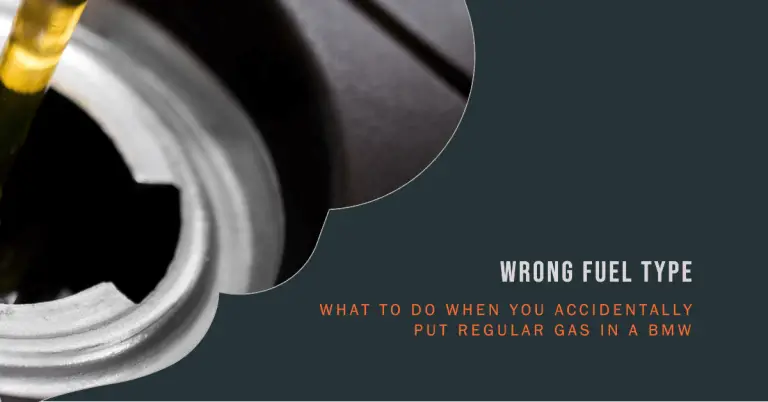What Size Are Stock F30 Wheels? The Ultimate Guide to BMW F30 Wheel Sizes
If you drive a BMW F30 3 Series, you may be wondering: what size wheels came stock on my car? This comprehensive guide will cover all the original equipment wheel sizes for the F30 across trim levels and model years. Read on to learn BMW F30 wheel specs in detail.
Introduction
The BMW F30 is the sixth generation of the iconic BMW 3 Series model, produced from 2012 to 2018. As a luxury sports sedan, the 3 Series comes equipped from the factory with alloy wheels sized for optimal performance and handling. But F30 wheel sizes can vary depending on factors like:
- Model year
- Trim level
- Country of sale
This detailed guide will thoroughly answer the question: what size are stock F30 wheels? We’ll cover the OE wheel diameters, widths, offsets, lug patterns, and more for every F30 model sold worldwide. Whether you want to replace your worn out OEM wheels or get new tires, knowing your stock wheel specs is essential.
So without further ado, let’s dive into the wheel sizes for the F30 BMW 3 Series!
2012-2015 F30 Wheel Sizes
The first generation of the F30 3 Series was sold from 2012 to 2015. Here are the original factory wheel sizes offered during these model years:
328i
The 328i was the base rear-wheel drive model. 17 inch alloy wheels were standard, with optional upgrades to 18 inch wheels available.
328d
The 328d was the diesel variant of the base model. Like the 328i, it came with 17 inch wheels as standard and 18 inch wheels as a factory option.
335i
The 335i was the top-spec F30 until the 340i arrived. 18 inch alloys were standard on the 335i, with larger 19 inch wheels offered optionally.
340i
Introduced in 2015, the 340i came with 18 inch wheels equipped as standard like the 335i. Upgraded 19 inch wheels were also available from the factory.
ActiveHybrid 3
The hybrid-electric ActiveHybrid 3 was equipped with 17 inch wheels as standard, with 18 inch alloy wheels as a factory option.
2016-2018 F30 Wheel Sizes
For the F30’s mid-cycle refresh from 2016-2018, here are the wheel fitments by model:
330i
The 330i replaced the 328i as the new base rear-wheel drive model. Like its predecessor, 17 inch alloys were standard and 18 or 19 inch optional.
340i
The 340i continued as the top non-M model. Factory 18 inch wheels remained standard, with optional 19s.
330e
The plug-in hybrid 330e came equipped with 17 inch wheels standard, and 18 inch alloys optional.
OE Wheel Dimensions
Now that we’ve covered the OEM wheel diameters, let’s look at the full dimensions of the original wheels size by size:
17 x 7.5 inches
The 17 x 7.5 inch wheel was the most common stock size on F30 models like the 328i, 328d, ActiveHybrid 3, and 330i.
18 x 8 inches
The 18 x 8 inch wheel came standard on performance models like the 335i and 340i, and was a popular factory upgrade option on other trims.
19 x 8.5 inches
The largest stock F30 wheel, the 19 x 8.5 inch was included with the M Sport package or available as a stand-alone option.
Country Variances
While the above wheel sizes were typical worldwide, some country and region specific variances existed:
Europe
European F30 models often came with smaller wheels than other markets. More base models were equipped with 17 inch wheels. And 16 inch wheels were occasionally available.
United States
Larger 18 or 19 inch wheels were commonly standard in the US. Base US models typically had 18 rather than 17 inch alloys.
Asia
Certain wheel designs and sizes were offered exclusively in Asian markets like Japan. These included lightweight BBS wheels imported from Germany and Malaysia-made wheels with unique specs.
Finding Your F30’s Stock Wheel Size
If you don’t know your BMW’s original wheel size, there are a few ways to determine the OEM spec:
- Check your owner’s manual or factory service records for wheel dimensions.
- Look for the wheel size molded into the sidewall of your tires.
- Match the wheel cap markings to OE wheel specs.
- Consult BMW with your VIN to get factory build info.
Knowing whether you have the standard or optional wheel size fitted will ensure getting proper replacement wheels or tires later on.
Benefits of OEM Wheels
Sticking with stock-sized wheels on your F30 has some advantages:
The wheels and tires are optimized for the 3 Series chassis and suspension geometry from the factory. Deviating from stock sizes can negatively impact ride quality.
Maintaining OE dimensions helps maximize MPG, as larger diameter aftermarket wheels and lower-profile tires often reduce fuel efficiency.
Upgrading to larger wheels can make steering overly sensitive. Keeping stock sizes preserves the balanced handling characteristics.
Smaller rims paired with taller sidewalls absorb road noise better than large wheels with thin tires. Staying OEM keeps things quieter inside.
OE wheel and tire sizes are far cheaper to buy new compared to expensive oversized aftermarket upgrades when it’s time to swap them out.
Reasons to Upgrade From Stock Wheels
While OEM wheels have some advantages, there are compelling reasons to upgrade as well:
Larger diameter wheels allow fitting bigger brake rotors for shorter stopping distances. This improves safety.
Wider aftermarket wheels enable using lower-profile tires with a larger contact patch for better traction when cornering fast.
Distinctive wheel designs help personalize your F30’s appearance versus cookie-cutter stock wheels seen on every base model.
Aftermarket alloy wheels are often lighter than heavy factory wheels, reducing unsprung weight for better suspension response.
Stylish new wheels make your 3 Series look more eye-catching and upscale, boosting resale value down the road.
Wheel Shopping Considerations
When shopping for new wheels, keep these important criteria in mind:
- Make sure replacement wheels match the diameter of your stock wheels or go slightly larger. Don’t downsize wheel diameter.
- Wider wheels can improve handling, but make sure they don’t rub against suspension or body components.
- Stick close to OE offset measurements for proper clearance and suspension geometry.
- Nearly all F30 models use 5×120 bolt spacing. Verify yours before ordering.
- New wheels should meet or exceed the OEM weight capacity rating. Don’t sacrifice durability.
- Stick with reputable wheel brands known for quality construction and materials. Avoid no-name knockoffs.
Prioritize safety and performance over looks when selecting new wheels. Consulting a knowledgeable tire shop can help get the right fitment dialed in.
Conclusion
Determining your stock F30 wheel size is the critical first step when considering new wheels or tires. This comprehensive guide covers all the original factory wheel sizes across 3 Series generations, models, and regions to help you identify your BMW’s OE wheel specs.
Understanding dimensions like diameter, width, and offset ensure proper fit and safe functioning when going beyond stock wheels. Work to balance performance enhancement with ride quality retention when sizing your upgrades. With the right wheels dialed in, your F30 will gain grip, brake better, and turn heads everywhere you drive.







